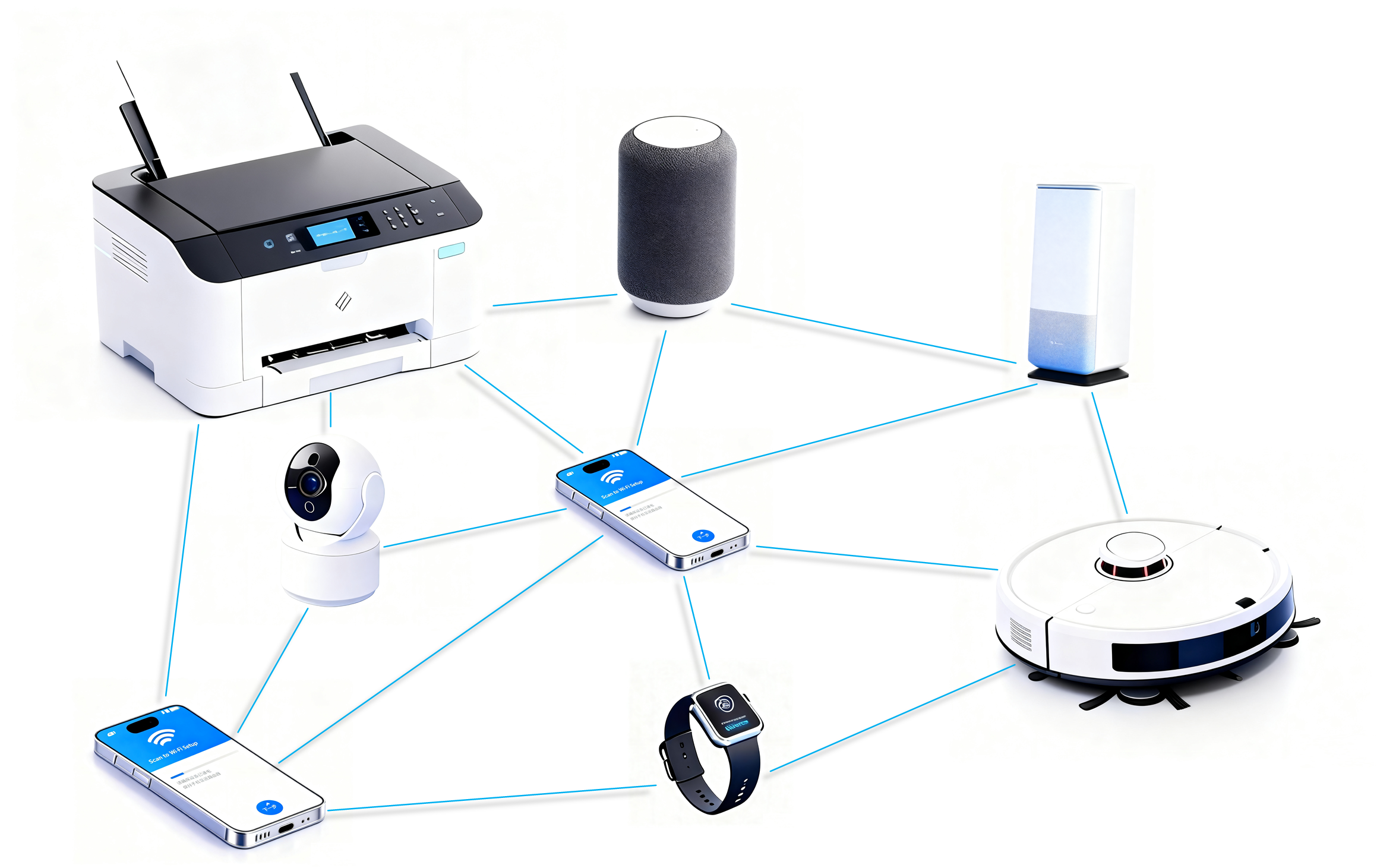Wi-Fi Aware (NAN)
Overview
Wi-Fi Aware, also known as NAN (Neighbor Awareness Networking), is a peer-to-peer communication protocol based on standard Wi-Fi technology. Its key distinction from Wi-Fi P2P is the decentralized architecture of Wi-Fi Aware, enabling all devices to autonomously discover and communicate directly without centralized coordination. As shown in the following diagram, devices may engage in interactions including but not limited to the following:
Multiple mobile phones simultaneously send print tasks to a printer via point-to-point links.
Mobile phones directly operate smart devices (e.g., cameras, sweeping robots, speakers).
File sharing between mobile phones.

Advantages
title_hide
Decentralized Network Architecture
Devices can communicate with each other without connecting to a Wi-Fi router or cellular network.
Peer-to-peer communication enables direct data transmission between devices after discovery.
When some devices go offline or move out of range, remaining nodes resynchronize clocks via the Anchor Master to maintain overall connection stability
Devices can simultaneously connect to Wi-Fi Aware networks and traditional Wi-Fi/cellular networks without interference, meeting parallel requirements for real-time data transmission and background services.
Efficient Service Discovery
Based on the Publisher/Subscriber model, devices match demands by broadcasting service identifiers (e.g., “file sharing”), achieving precise and low-latency discovery
Low Power Consumption
Devices synchronously wake up only during scheduled “Discovery Windows” to exchange beacon frames, remaining dormant most of the time
Enhanced Security
Encrypted data paths can be established between devices.
Secure inter-device authentication, key negotiation, distribution, and management are achieved through pairing.
GTK & IGTK provide protection for management frames and multicast data frames.
BIGTK safeguards beacon frames